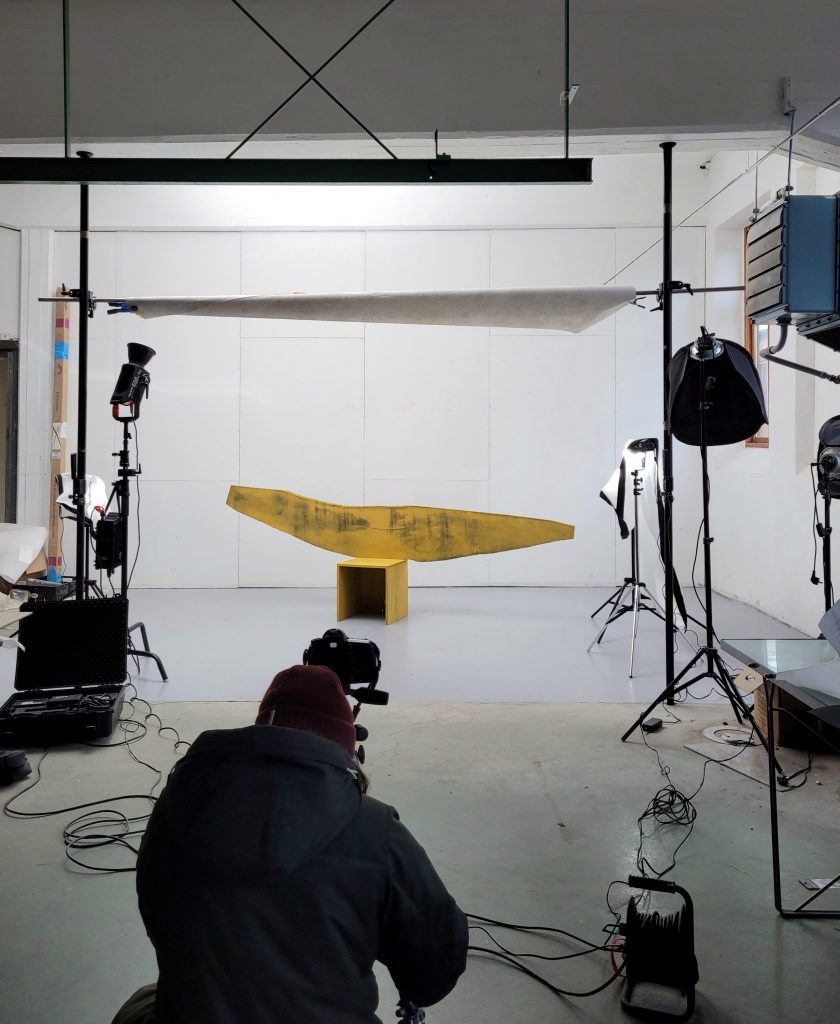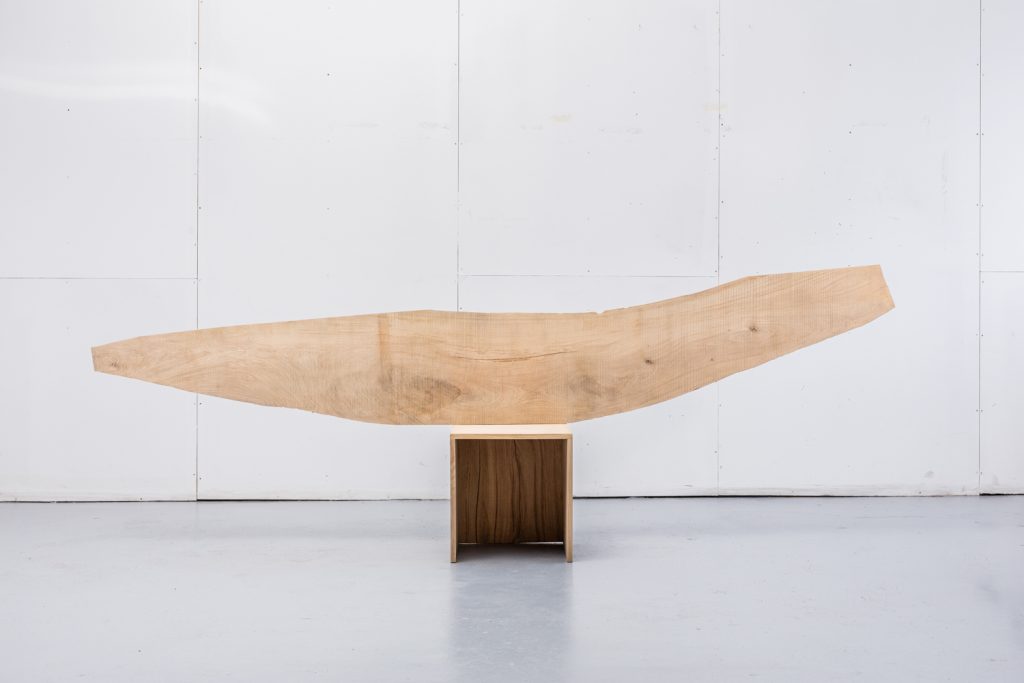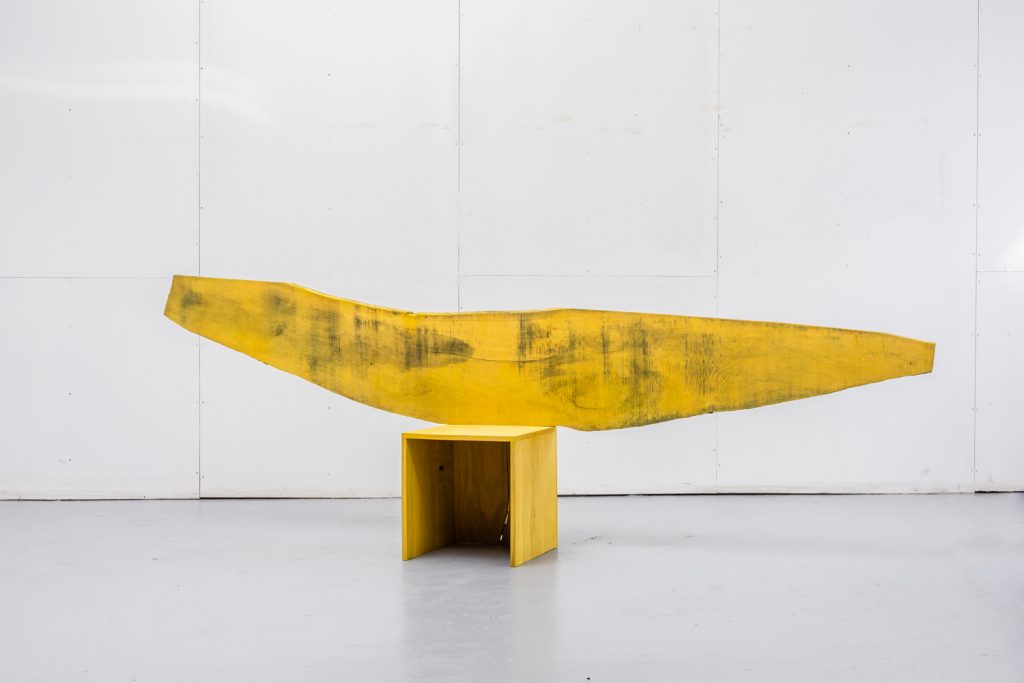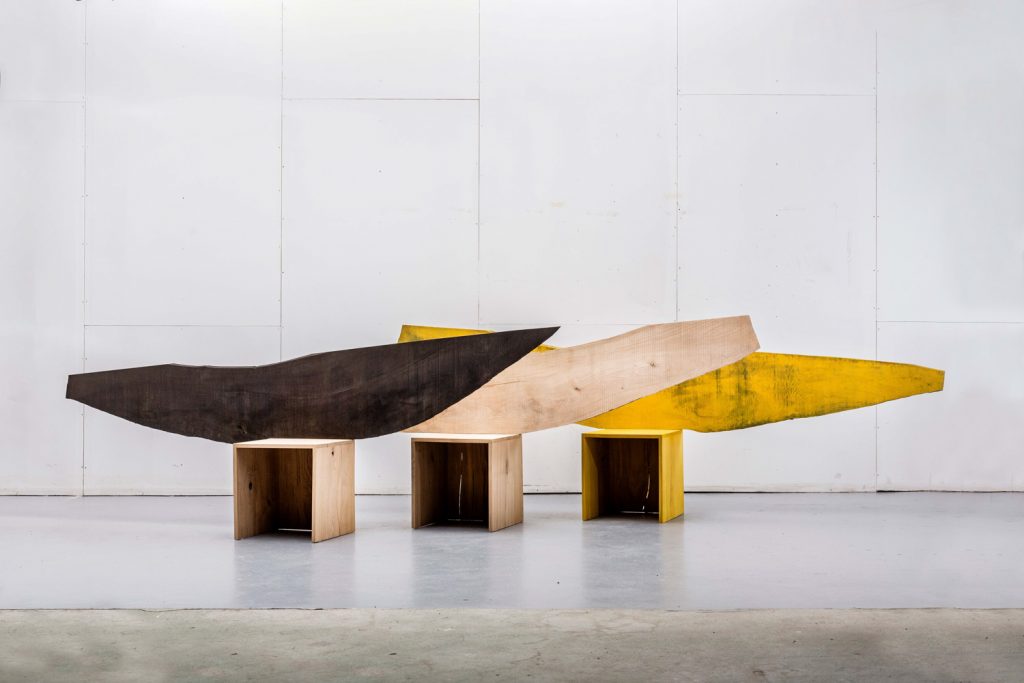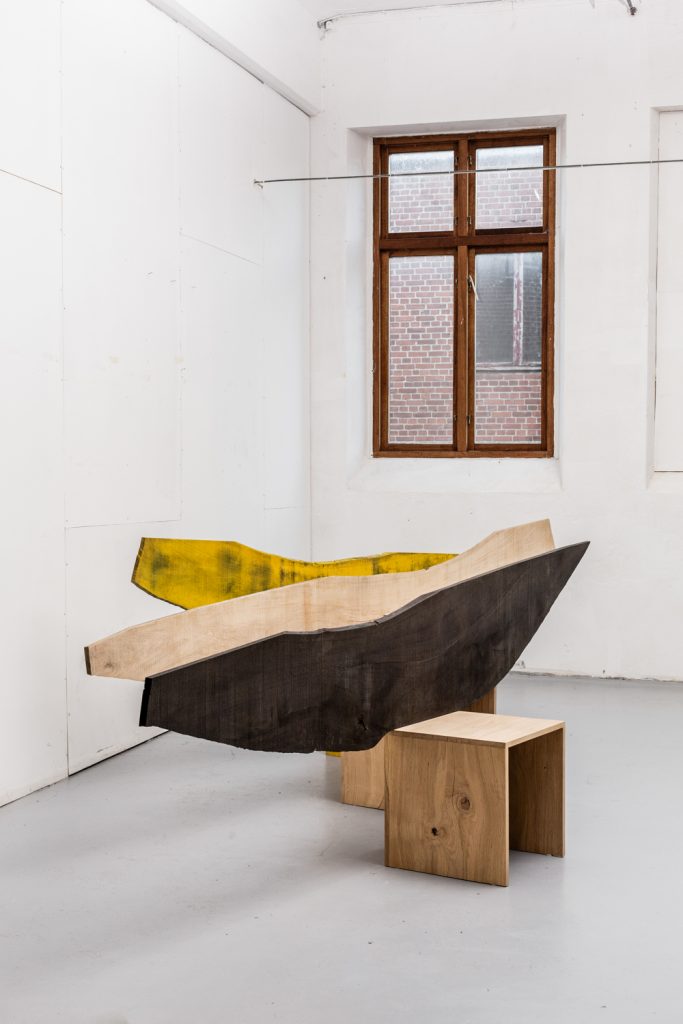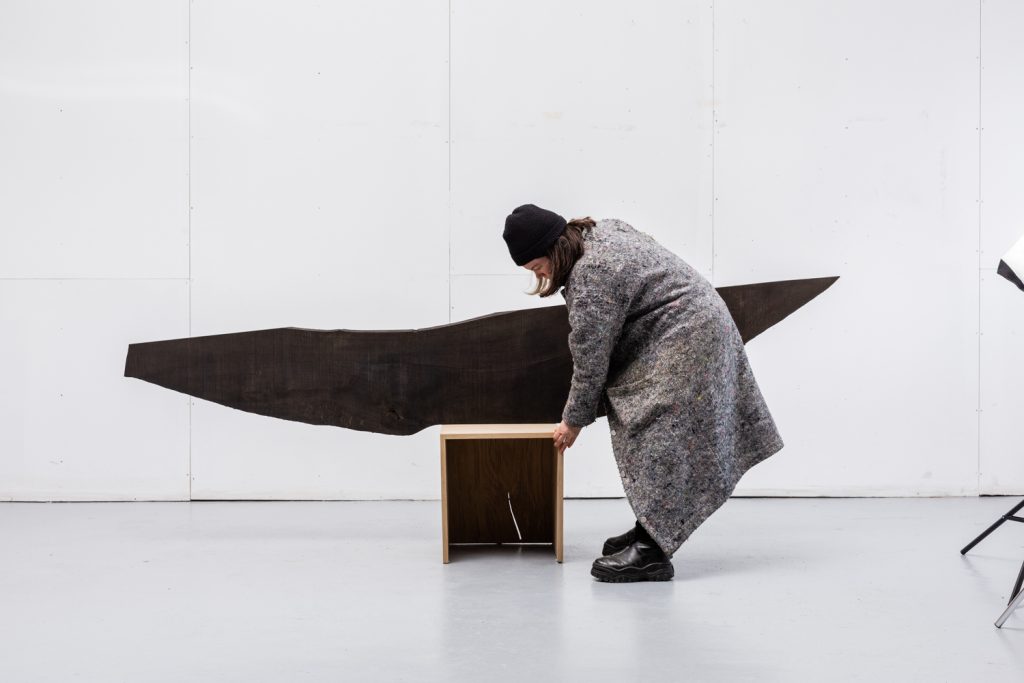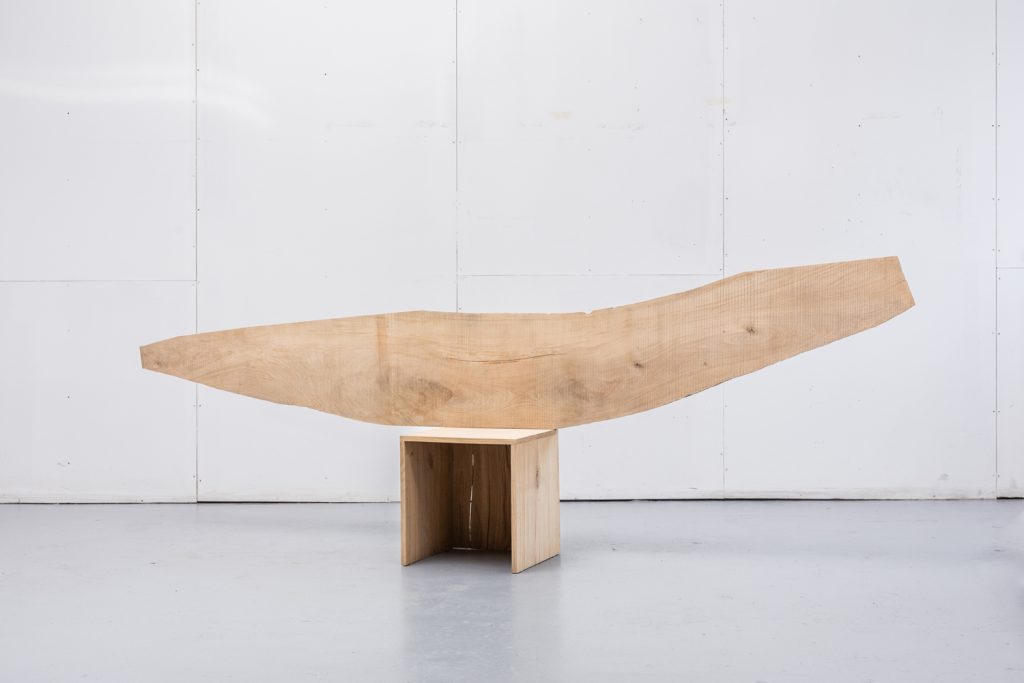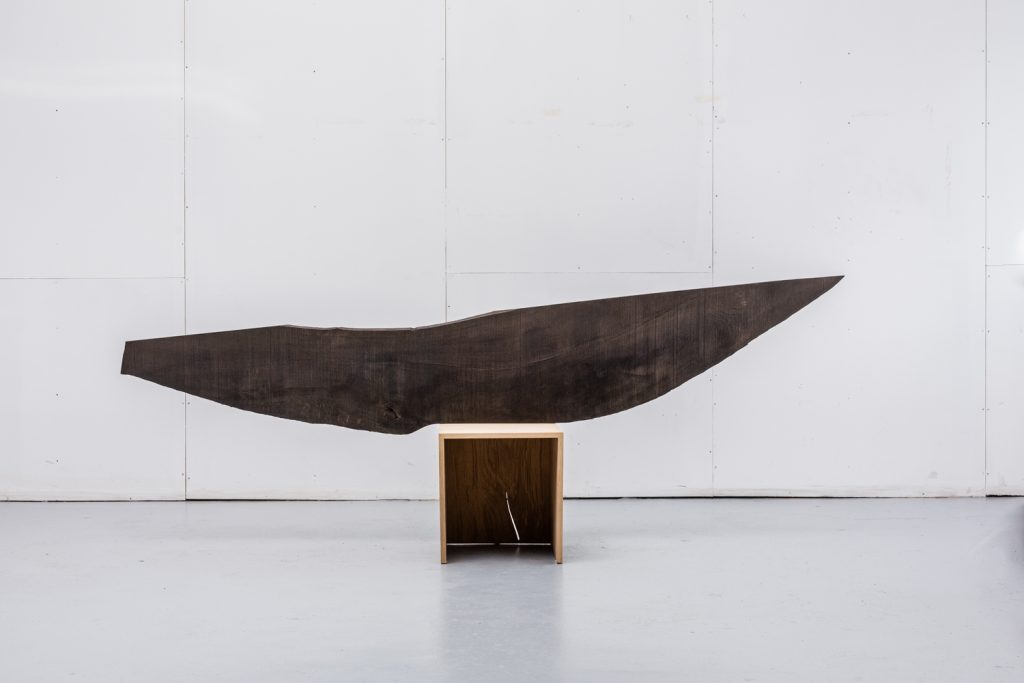-
Positive Enough
– How do you decide if a smile is true
”One early morning during the covid winter of 2021 I had a rich and vivid dream. I woke up with a clear image of a smiling chair with alluring eyes. I tried to draw it immediately but it was impossible to describe and capture the chair correctly. The smiling chair I saw in the dream seemed to be more of a feeling than something visual.”
Later that spring Jenny Nordberg visited the saw mill of Ingvar Olsson in the woods on the ridge of where she lives. Big slabs of oak wood were lying around and suddenly there it was – the smile. It had the shape and expression exactly like that in the dream.
Most of what characterises Jenny Nordberg’s practice can be found in the Positive Enough chair: A locally based design process, but also a design object that in its brutal and humorous expression presents the materials and manufacturing methods and makes them significant. This is combined with a seemingly carelessly nonchalant aesthetic precision based on meticulousness and experience.
An idea derived from the 19th century neurologist Guillaume Duchenne says that the muscles of the eyes are crucial for a smile to be interpreted as genuine. Spontaneous contractions of the muscles give the right wrinkles, signifying that the smile expresses a true feeling.
Positive Enough challenges the idea of the chair as a utility object, not only because of its unusual proportions that doesn’t put usefulness first – it also appears as anything but a passive object ready to be used. With its roughly-sawn surface the chair has plenty of wrinkles, but eyes are missing. The chair seems to be conscious though, it wants more than just fill up space in the room. Practicality becomes secondary when the chair’s emotional life takes over.
Material: Oak from Trolleholm, Skåne, Sweden.
Surface treatment: Soap
Measurements (hxdxw): Approximately 100x45x300 cm -


